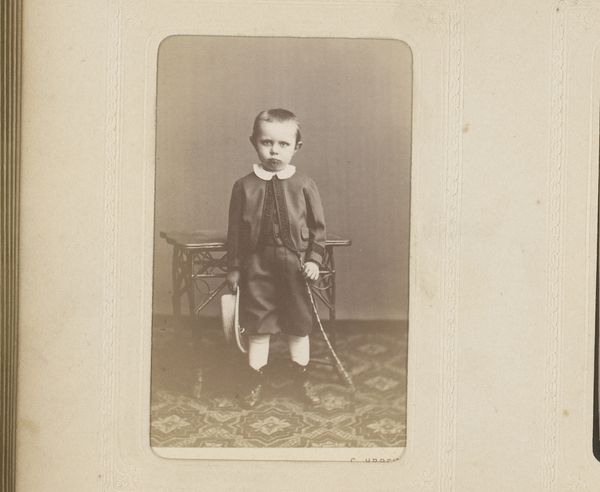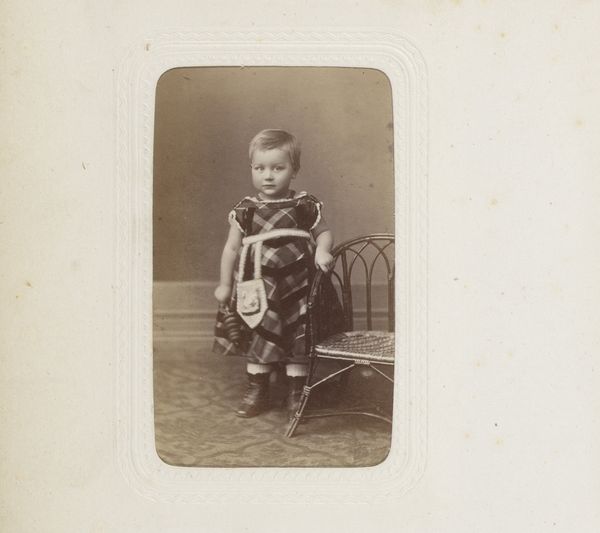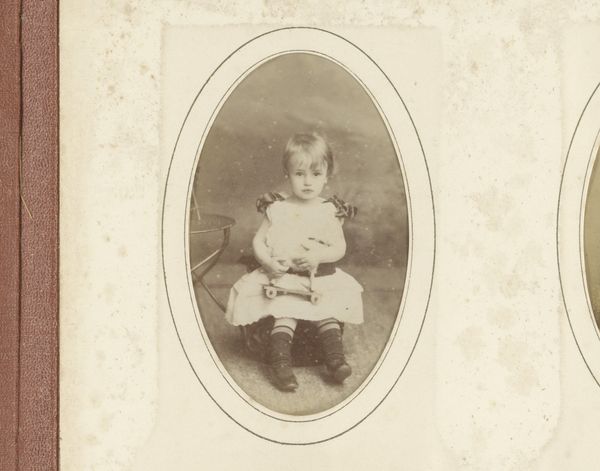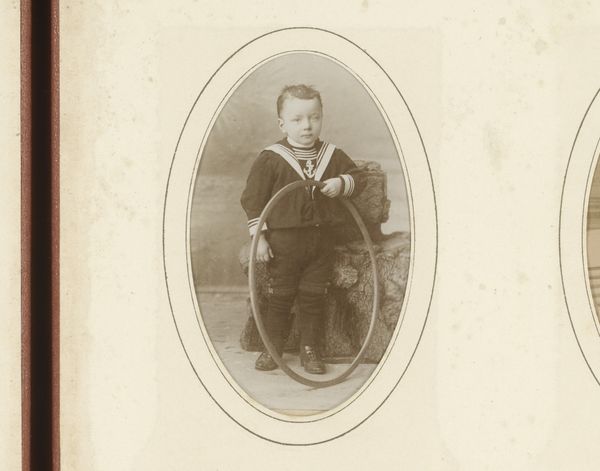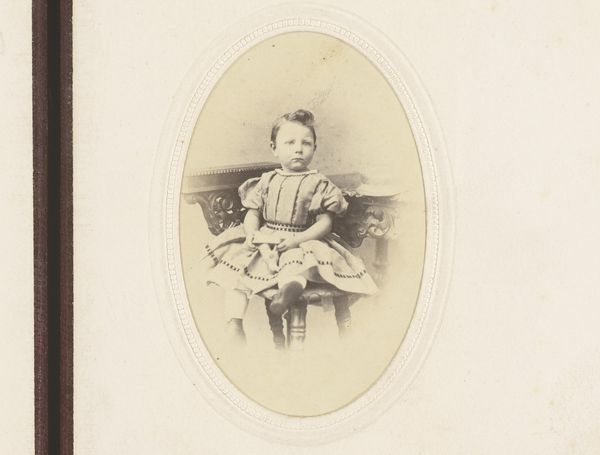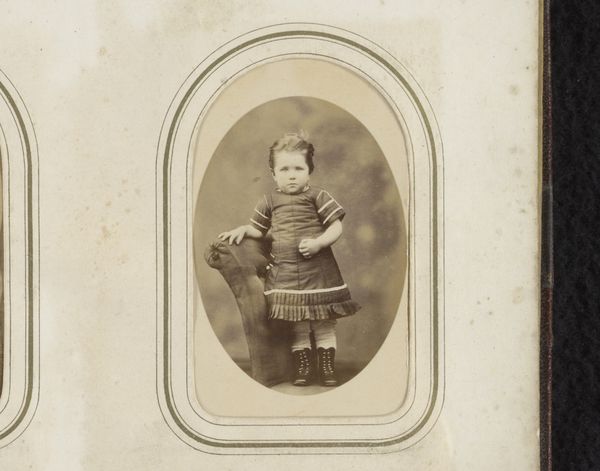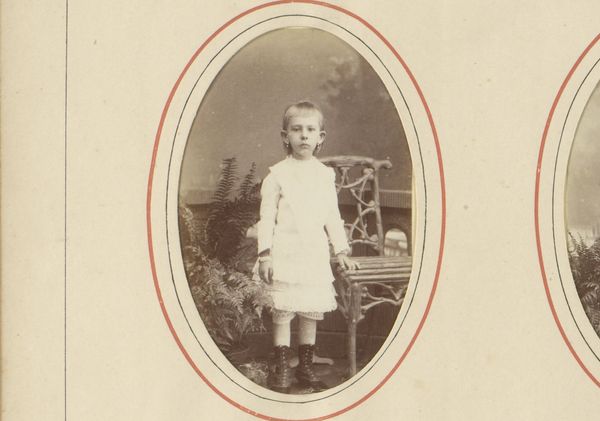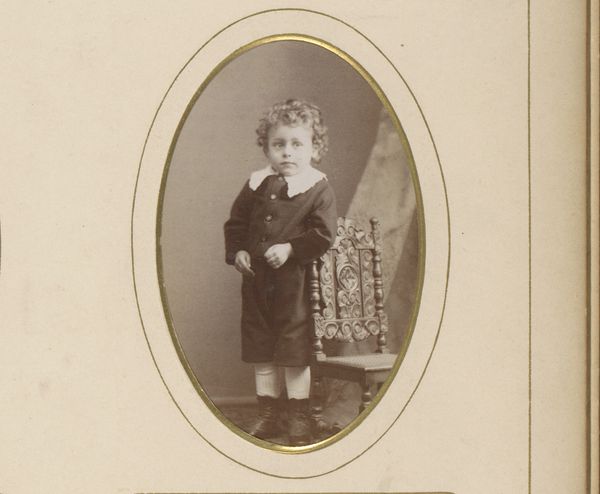
Portret van een kind met hoed in de hand, staand bij een stoel 1859 - 1890
0:00
0:00
Dimensions: height 85 mm, width 52 mm
Copyright: Rijks Museum: Open Domain
Editor: This is "Portret van een kind met hoed in de hand, staand bij een stoel", taken between 1859 and 1890, by Johannes Petrus Oppers. It’s a gelatin-silver print depicting a child dressed in what looks like a velvet suit. There's something very formal and almost melancholic about it. How do you interpret this work? Curator: What strikes me is the deliberate construction of childhood itself in this photograph. In the 19th century, childhood became this heavily idealized, protected space, right? The child’s formal attire, their almost miniature adult pose, it all speaks to this performance of innocence. Who do you think this performance served, and what power structures were at play? Editor: Well, you see the child in this very structured setting... perhaps reflecting societal expectations of how children from certain social classes should behave and be seen? Was this about conveying status? Curator: Exactly. Photography democratized portraiture to some extent, but it also reinforced class and gender norms. The photograph becomes a tool to solidify and disseminate those ideals. It's fascinating how an image, seemingly simple, can reveal so much about the socio-political landscape of its time. What do you think the limitations of the image are for interpreting the historical experience? Editor: It does make me think about what’s *not* being shown. I wonder what a more "candid" photograph might have revealed about childhood in that era, rather than this constructed image. Curator: Precisely. And that tension between the seen and the unseen, the intended message and the unspoken realities, that’s where art history becomes really exciting. Editor: I agree, it is like reading the visible and the invisible.
Comments
No comments
Be the first to comment and join the conversation on the ultimate creative platform.
